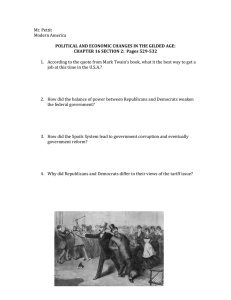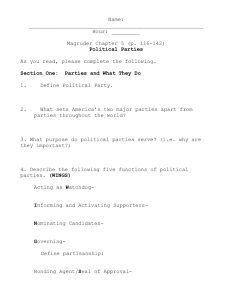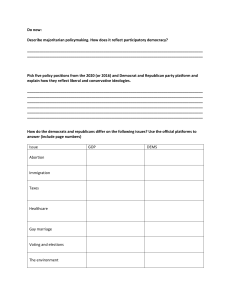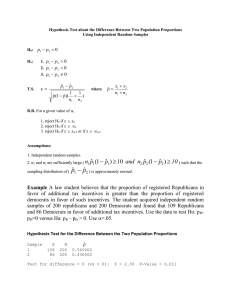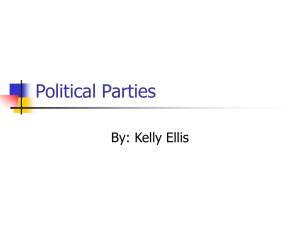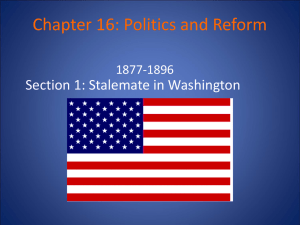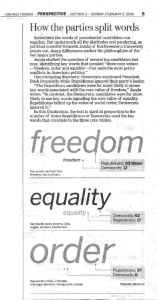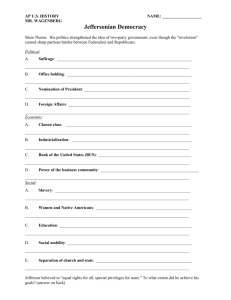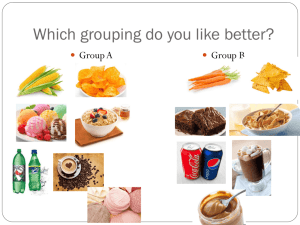Political Parties
advertisement
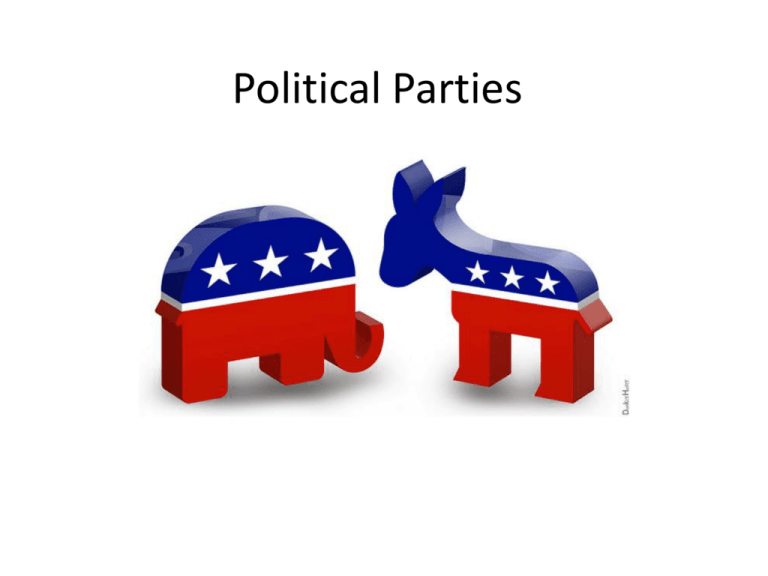
Political Parties Political Parties • A political party is an organization that seeks power and influence. Who are members? • Members of a political party share the same or similar opinions on many issues, but there may be differences. • Anyone can be a member as long as they are citizens of the US and are 18 years old and older. Role of Political Parties • Selecting and Supporting candidates – Informing the public and activating supporters through pamphlets, bumper stickers, ads, signs, buttons – Act as bonding agent • To ensure qualified representatives are carrying the people’s message to government Role of Political Parties • Serve as a link – Enables the branches and levels of government to communicate • Acts as a watchdog – The party not in power is watching the party in power The US Two-Party System • In the United States, there are only two major political parties. • The two major political parties in the United States are the Democrats and the Republicans. • In China & North Korea, there is a One-Party System – or only 1 political party • In Israel & much of Europe there are multiparty systems – or 3+ political parties Why Political Parties • Although the Constitution of the United States does not mention political parties, they came into being around the time the nation was formed. The History of the 2 Political Parties • Thomas Jefferson and Alexander Hamilton had different visions of America's future. Their differences led to the first political parties in the United States. • Jefferson favored a less active federal government, a limited presidency, and ties to France. Hamilton favored a strong federal government, a strong presidency, and ties to England. Minor Political Parties • The two-party political system in the United States is the result of a winner-takes-all voting system. • Some minority parties – Ideological Parties (Environmentalism) – Independent Candidate Parties (on their own) – Single Issue Parties (Green Party) – Splinter Parties (Libertarian) Differences between the Political Parties • The differences between the two parties are not exact and there is a lot of overlap in their policies • 1. In 2004, about 42.6 percent of Americans were registered Democrats, 32.5 percent Republicans, and 24.8 percent independents. • 2. The Republican Party is called "right" and "conservative" and the Democratic Party is called "left" and "liberal". Both parties have a strong "center". • 3. Political factions occur within parties when there are differences of opinions over policies. • 4. George Washington did not belong to a political party. He is the only president that was elected as an independent. Democrats & Republicans • Democrats tend to favor a broader and more active role for the federal government, labor laws, and vigorous social programs. • Republicans tend to favor states' rights, policies that favor businesses, and private solutions to social problems. Political Parties & Ideas • Platforms and Planks – Platform – a political party’s statement of its goals and positions on all issues – Plank – a single issue on a political party’s platform
